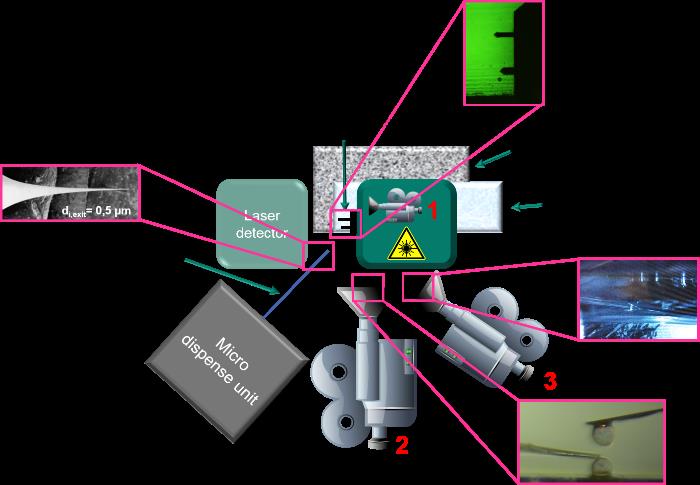AFM measurements of capillary forces between micro particles in gases and liquids
Capillary suspensions can be used to make macroporous materials with a very high mechanical strength and wide range of applica tions such as filtration membranes, high surface electrodes or medical implants. For these applications, precise control over porosity and strength of the porous material is a key engineering task. The rhe ological properties of a particle suspension can be significantly altered by adding a small amount of a secondary fluid that is immiscible with the bulk phase.1 The changes in the strength arise due to the capillary forces between micron-sized particles leading to a percolating particle network which can be used as a precursor for porous materials. In order to control the final material properties, we must better understand the strength and failure of the direct particle contacts. This project aims to measure the interaction force between micron-sized glass or polymer particles connected by monomer bridges in a fluid environment using colloidal probe atomic force microscopy (CP-AFM).
Before polymerization, the force will depend on the interfacial tension, contact angle, relative size of the bridge, and separation distance. The contact angle hysteresis, the difference between the advancing and receding contact angles, can differ and will affect the network structure formed during initial mixing as well as the suspension strength upon subsequent deformation.
After polymeriza tion, the adhesive or cohesive force between the bridge and particle will affect the strength of the porous body. Using CP-AFM, we can measure the elastic modulus as well as the yield and fracture strengths. We can also determine the failure mode (e.g. cohesive failure at the bridge neck or adhesive failure of the bridge-par ticle interface) by imaging the sample during or following the measurement. Experiments can be conducted either in air or in a liquid at controlled temperatures.
As this experimental set-up to conduct CP-AFM experiments in a heated, liquid environment is novel, the first paper (in progress) will include a detailed description of the instrumentation. It will also include measurements of capillary force measurements in air and in liquid and force mea surements during and after polymerization of the capillary bridges.

